
EUROMETAL: Die Zukunft in Sachen Stahl

Das EUROMETAL Summit vom 10. bis 12. Mai in Düsseldorf vermittelte den Teilnehmern einen aktuellen und substanziellen Einblick in aktuelle Trends der Stahlbranche. Dr. Edwin Basson, Generaldirektor der World Steel Association, zeichnete aus Sicht der Fachgesellschaft die wichtigsten Herausforderungen nach.
Noch mehr Kreislaufwirtschaft
Dieses Konzept wird nach Einschätzung von Basson weitere Verbreitung finden. Es lässt sich kurz mit „4R“ umschreiben: Reduce, Reuse, Remanufacturing, Recycle. Dahinter verbirgt sich ein Konzept der Nachhaltigkeit; es geht darum, den Rohstoff Stahl effizienter einzusetzen. So werden Produkte nicht mehr nur neu entwickelt, sondern weiter optimiert und neue Anwendungsmöglichkeiten geschaffen (reduce). Oder die Produkte werden in völlig anderer Funktion verwendet (reuse) beziehungsweise durch Veränderungen oder Veredelungen zu neuen Produkten verarbeitet (remanufacturing). Das Recycling von Stahl ist ein bereits lange bestehendes Konzept, das letztlich zu einer geringeren Nachfrage von neuem Stahl führt und recycelfähigen Stahl noch wertvoller macht. Neue Anwendungen innerhalb dieser Kreislaufwirtschaft zu entwickeln sei eine große Chance für Unternehmen, hieß es. Sie machen auf der anderen Seite auch die latenten Überkapazitäten sichtbar.
Der Wert der Digitalisierung
Die Schlagworte in der Schwerindustrie heißen hier: Automatisierung, Konnektivität, integrierte Lösungen, globale Wertschöpfungsketten. Auch wenn das zu einer Intensivierung des weltweiten Wettbewerbs führt, so überwiegen doch eindeutig die Chancen, die für jene, die quer denken, vor allem in neuen Geschäftsmodellen liegen.
Darüber hinaus wirkt sich die Globalisierung als dritter Megatrend auf die Stahlbranche aus: Langfristig – das wurde auf der Eurometal Tagung deutlich – werden nur Unternehmen überleben, die ihre Wettbewerbsposition global behaupten können.
Quelle: marketSTEEL
EUROMETAL MILAN: Italy’s service centre shipments up in Q1 2017 but lag EU average
Shipment volumes from Italian steel service centres (SSCs) increased by 0.60% year-on-year in the first quarter of 2017, European steel trade federation EUROMETAL said at its regional meeting in Milan, Italy, on Thursday May 18.
This compared with an EU average growth of 2.50% over the same period. However, shipments in Austria, Germany, The Netherlands and Belgium rose by 8.30% year-on-year in January-March.
Italian SSC shipments of hot rolled flat products fell by 3.40% year-on-year in the first quarter of 2017, compared with average growth of 0.70% year-on-year for the 28 EU member states.
Shipments from Austria, Germany, The Netherlands and Belgium of hot rolled flat products increased by 8.50% year-on-year in January-March.
Italian SSCs showed a year-on-year increase in shipments of both cold rolled flat steel products (3.20%) and galvanized and coated flat steel products (4.0%) in the quarter.
However, this lagged behind the EU average year-on-year increases of 3.50% and 4.0%, respectively.
Shipments from Austria, Germany, The Netherlands and Belgium of cold rolled flat steel products (up by 7.50% year-on-year) and galvanized and coated flat steel products (up by 8.40% year-on-year) were also strong in January-March.
Viral Shah viral.shah@metalbulletin.com
EUROMETAL MILAN: EU trade cases lead to 51% fall in related steel imports
Trade cases opened by the European Commission (EC) have led to a fall in steel imports from the exporting countries under investigation, European steel trade federation Eurometal said at its regional meeting in Milan, Italy, on Thursday May 18.
Steel imports related to EU trade cases totalled 1.514 million tonnes in the first quarter of 2017, according to Eurometal. If extrapolated to a full year, this would equate to 51.33% drop from a total of 12.442 million tonnes in 2015.
Imports of hot rolled coil (HRC) from China into the EU fell by 30.65% year-on-year to 1.03 million tonnes in 2016, from 1.49 million tonnes in 2015, after an anti-dumping investigation was initiated in February 2016 and provisional duties were imposed in October 2016.
Chinese HRC imports fell further ahead of the imposition of higher definitive duties on April 6, 2017. Imports fell sharply to 4,900 tonnes in the first quarter of 2017, compared with 336,000 tonnes in the corresponding period of 2016.
The EC decided not to impose preliminary duties on imports of HRC from Brazil, Iran, Russia, Serbia and Ukraine, it said on April 10.
Imports of HRC from Brazil increased by 14% year-on-year to 657,900 tonnes in 2016, and by 19% year-on-year to 2.03 million tonnes from Russia in 2016, Eurometal said.
However, imports have fallen sharply since the EU implemented a ruling on January 6 that all imports of HRC from Russia and Brazil must be registered on arrival in the region, Eurometal added.
The EC’s decision not to impose provisional duties reduced HRC prices by €40-50 ($45-56) per tonne, according to Antonio Gozzi, president of Italian steel federation Federacciai.
Gozzi was speaking at the Made in Steel 2017 conference, which is taking place alongside Eurometal’s regional meeting in Milan.
Metal Bulletin’s price assessment for EU domestic HRC ex-works Southern Europe was €500-515 ($557-573) per tonne on May 17, down from a one-year peak of €530-550 ($590-612) per tonne on March 1.
“The EU already has the tools – that is, provisional duties. Nobody is calling for [further] protective measures, but Europe should hurry up,” Gozzi said.
“Northern European deindustrialised countries, for example, are not affected by this issue, which is reducing steelmakers’ profitability. Currently, we see a $150 per tonne price gap between the USA and Europe,” he added.
Increased demand in the EU’s steel markets in 2016 was soaked up by a growing volume of imports to the region, steel association Eurofer said in its annual report on May 17.
The EU steel market expanded by 3.20% in 2016, but imports increased by 9% over the same period, which prevented domestic steelmakers from taking advantage of the sector’s growth, the trade group said.
Viral Shah viral.shah@metalbulletin.com
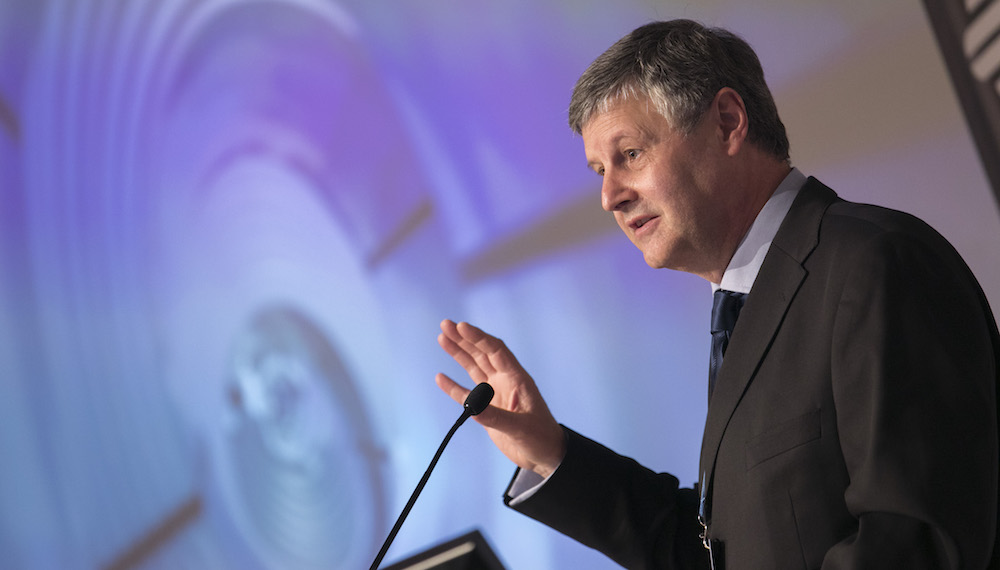
Global industry at ‘inflection point’: Basson
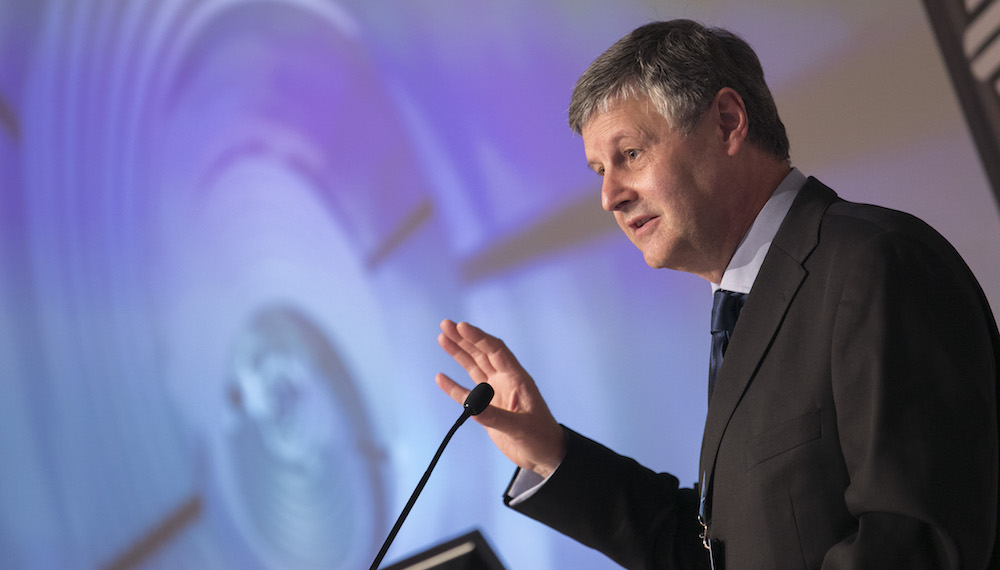
The global steel industry has reached “an important inflection point” that requires steelmakers to consider new strategies to survive, according to World Steel Association Director General Edwin Basson.
Speaking Thursday during the EUROMETAL World Steel Distribution & SSC Summit in Dusseldorf, Basson said current global installed steel capacity — at some 2.39 billion mt — is already enough to meet supply requirements through 2035.
Finished steel demand is likely to be around 1.535 billion mt in 2017, up only 1.3% from the previous year, and nearly 1.549 billion mt in 2018, an increase of 0.9% year on year, according to worldsteel. Strong steel demand growth in developing countries will offset stabilizing demand in developed economies, but it means mostly flat overall global demand for likely the next two decades or more, Basson said.
Combine those factors with declining trends in steel use — due in part to increased production of high-strength, lightweight steels and a sharper focus on reuse and recycling — and the outcome is clear. “We believe that steel demand, in terms of volume, has reached an important inflection point,” he said. “It will continue to grow, but the growth … is going to be much slower than it has been in the past two decades.”
Basson said a ton of steel remains in use for an average of 47 years in Europe, 44 in the US and less than 40 in China. The global average is around 45 years. With technological improvements resulting in less steel being required in many applications and yielding longer lifespans for the material, those averages are likely to increase, he said.
“If it’s only five years that we’re extending the life of steel, it means that we’re pushing that demand forward five years,” Basson said. “As steelmakers and users of steel, we should begin to plan around this [knock-on effect].”

In addition, as emerging economies have developed their own domestic steel industries and global overcapacity has pushed tons into the export market, trade case filings in the US and Europe, in particular, have increased in volume in recent years. Basson cautioned that such a strategy is unlikely to be sustainable.
“Protectionism can help us in the short term … but it cannot in the long term provide stability in an industry that is driven by global forces,” he said.
Christopher Davis, S&P Global Platts
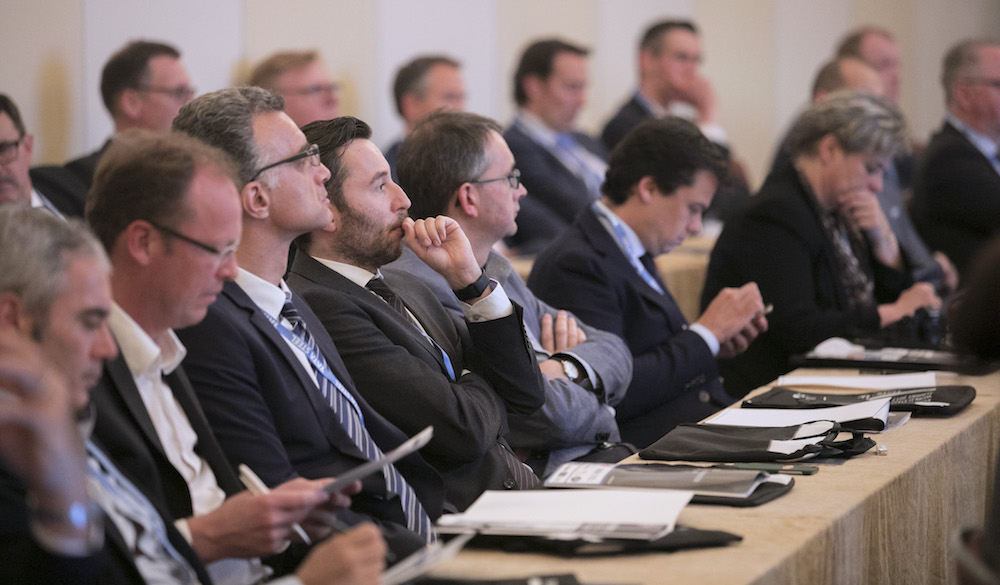
€500/mt likely to be the cut off point for HRC fall: sources
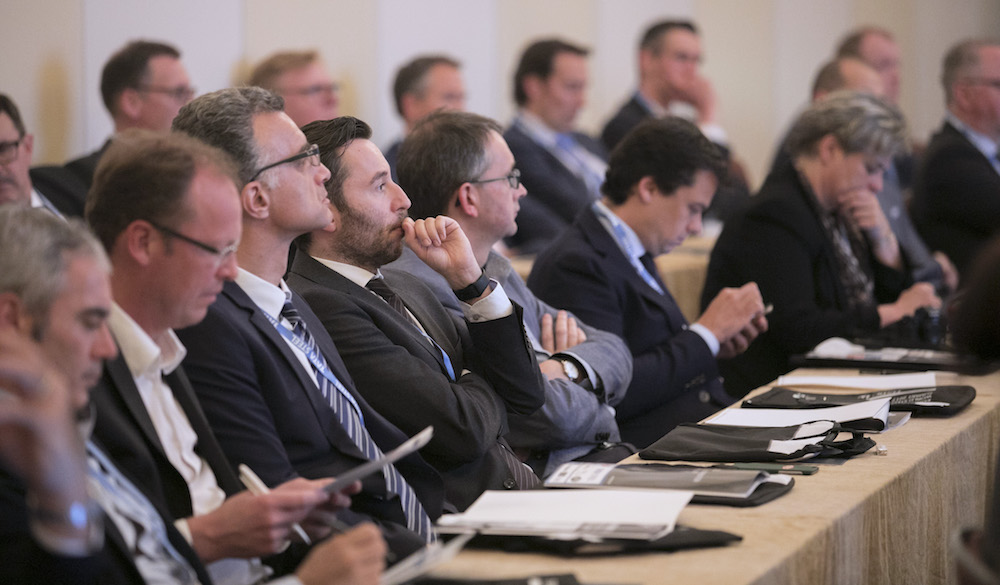
The European coil market has been slipping downwards, but delegates at the EUROMETAL World Steel Summit conference in Dusseldorf did not expect a prolonged fall, with many suggesting €500/mt ex-workks will be the cut off point for hot rolled coil.
While pressures are building in central and eastern Europe, traders noted the withdrawal of Russia from the import market and the potential for the declining coil prices to invigorate the EC’s investigation into HRC imports.
“I don’t see the market dropping considerable so it won’t go below €500/mt, maybe €510 but not much lower,” a mill source said. He said he was still “easily” able to achieve sales at around €530-540/mt in Germany, but accepted the market is on a downward track.
A trading source said he expects the major Europeans to return below €500/mt, but agreed that pressure from imports was slowing. He said the biggest cause for the European HRC market to fall was the availability of Russian HRC once the preliminary duties were not imposed. But he noted “the window for buying from Russia is now closing” as Russian mills have now largely withdrawn from the market.
He said many had bought in big quantities from Russia at €480-490/mt CIF Antwerp, but the lead times meant the trade flow was no longer viable.
In January, the EC enforced registration of Brazilian and Russian HRC but, as preliminary duties were not imposed, material could again be bought without threat of duties. As a result, there was a window of opportunity for people to buy.
But while preliminary measures were not imposed, buyers said they were concerned final duties could still be imposed and made retroactive. “The EC can announce registration again at any point,” a buy-side source said. The retroactive period can be applied for three months before the October 6 final decision which means many are nervous that HRC arriving in July will be susceptible to measures.
In his presentation, Alexander Julius of the German trading group Macrometal said: “It was the first case where the European Commission really considered the case of the end users, and the first case where they faced a major objection from end users.” But he said the EC had made €500/mt the effective cut off point, so if the market falls back below that level he said it was more likely that final duties would be imposed.
Peter Brennan, S&P Global Platts
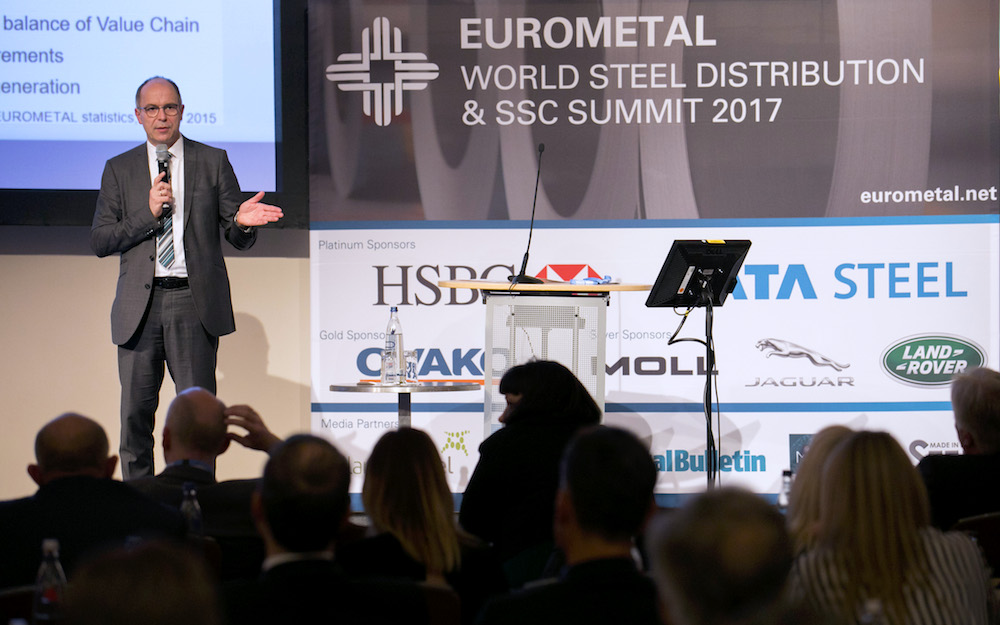
European steel distribution ‘highly fragmented’: EUROMETAL
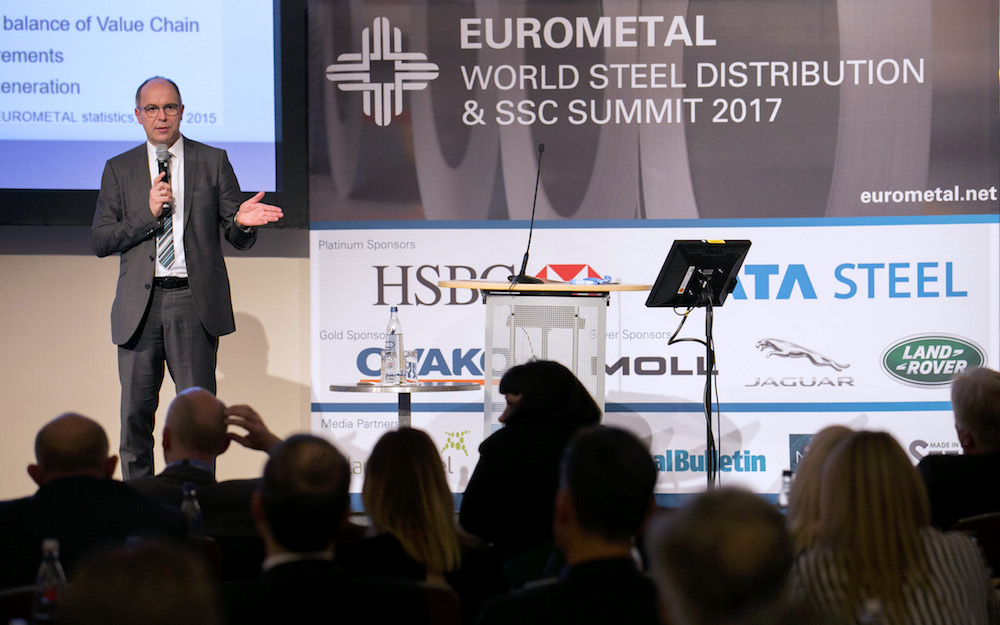
European steel distribution is seeing a trend towards changes in customers’ automotive requirements, while facing overcapacity and a complex structure owing to the co-existence of independent SSCs and mill-tied distribution, said Jens Lauber, President of EUROMETAL and CEO of Tata Steel Distribution, at the EUROMETAL World Steel Summit conference in Duesseldorf Thursday.
Asked in a panel discussion how European distribution compares with other regions, where mills do not establish distribution entities (and where there is a clear split between producer, distributor and customer), Lauber said Europe’s distribution landscape is indeed more complex and complicated, but “the customer side is finally on a good side they can decide on what service they want”.
Of the 80 million mt/year of steel distributed throughout Europe, around 30 million mt is distributed via SSCs, of which a third are mill-tied he said. “An SSC makes sense on its own and it makes more sense that they are independent,” said Josu Calvo, CEO of Gonvarri Services at the discussion, adding there should also be “fair play” within distribution. Pierre de Silly, General Manager of the Edgen Murray Sumitomo Corp., pointed out that the distribution units of mills do function independently.
However, there are other factors that make Europe’s distribution network more complex, according to Lauber. The continent’s distribution is fragmented into regional markets: many regions in Europe have a specific balance in their value chain and each model has to meet end-customers’ requirements, he said.
Calvo highlighted that, although an SSC may have international locations, providing access to new customers, businesses must always act locally. “Being global, you will always compete locally,” he said, suggesting that markets within Europe are not only diversified from a geographical point of view, but must also differentiate within customers’ sectors while a trend towards value-based pricing can also be seen.
Laura Varriale, S&P Global PLATTS
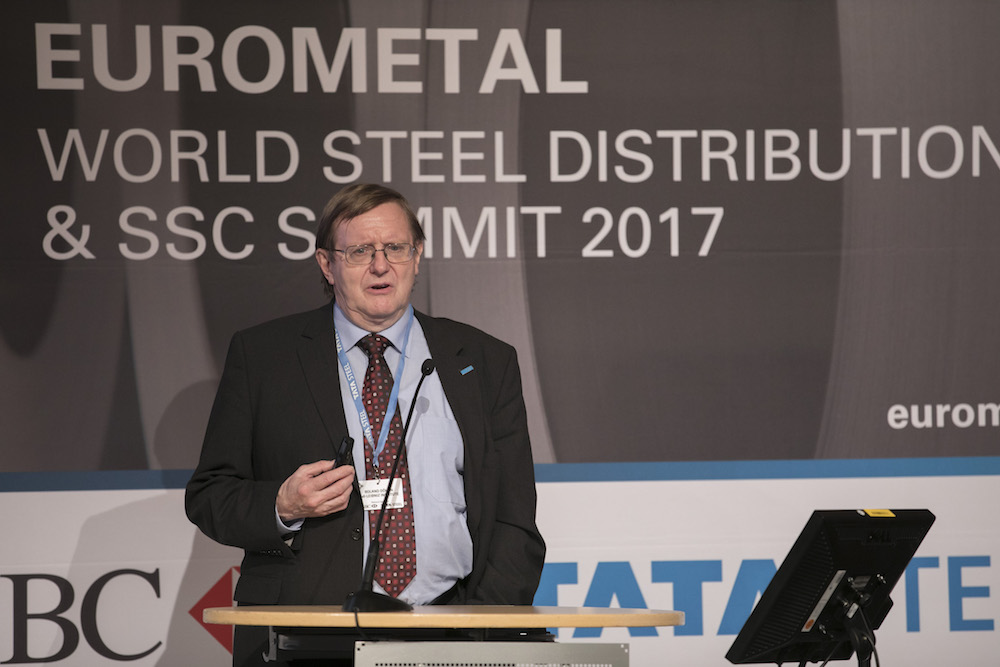
European construction sector improved, but uncertainty looms
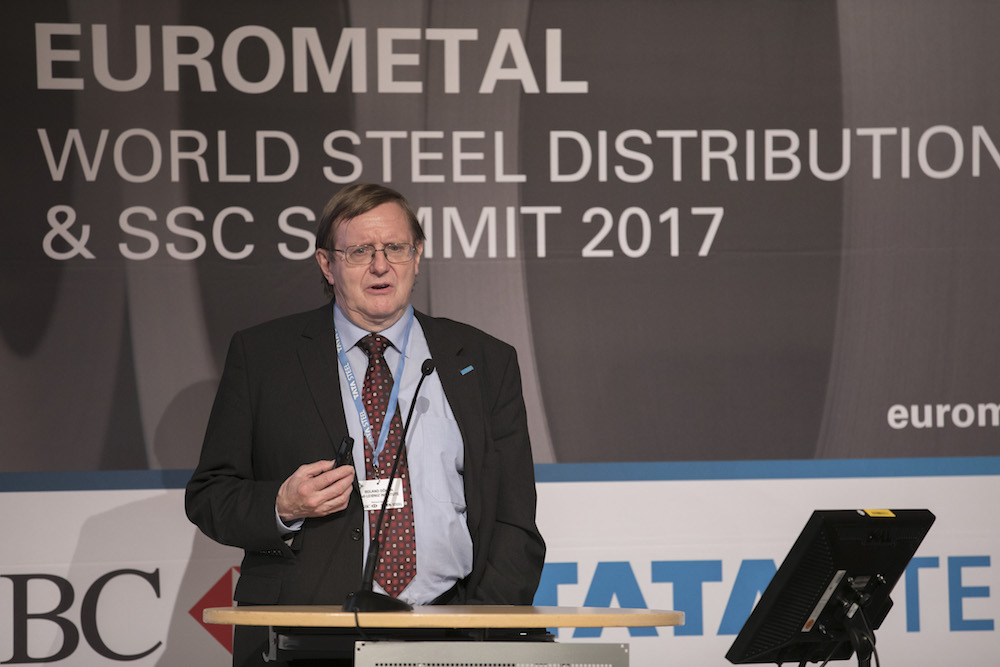
The European construction market has seen a reversal of fortunes lately, but overcapacity among the steel producers that serve the sector and political and economic uncertainty will continue to drag on fundamentals for some time, according to speakers at an industry event in Germany.
In a presentation Thursday at the EUROMETAL World Steel Distribution & SSC Summit in Dusseldorf, Gareth Beese – strategic development director for construction at British Steel – said construction has seen a progressive recovery in Europe and sentiment within the industry is positive.
Germany, in particular, has benefited from the upturn, according to Roland Dohrn, a professor of economic research at the RWI-Leibniz Institute.
“If you drive around in Germany, you will see a lot of cranes there,” Dohrn said, adding that he worries, though, whether data regarding the upturn is perhaps “a bit too good to be true.”
Margins remain thin for the companies that produce construction products like beams and rebar, and it’s a fragmented market with limited collaboration among participants, Beese said.
“There’s significant overcapacity still,” he said. “Producers have had to get used to operating plants at less than 100%.”
Dohrn said Europe’s economy performed well in the first quarter of 2017, which could underpin an upswing going forward. However, GDP growth for the region is predicted to be only around 1.9% in 2017 and 1.7% in 2018. Traditionally, a minimum of 2% growth has been necessary to stimulate significant additional steel demand and production, and Dohrn said the rule of thumb now has probably risen to even 3-3.5% GDP growth.
Beese said Brexit and its impact also continue to cloud the longer-term picture, not only for steel but from an economic standpoint, as well. “I think there’s a prolonged period of uncertainty for all of us,” he said.
One certainty he hopes for, though, is that Europe and the UK will remain post-Brexit trade partners. “We want and expect continued access to European markets and, quid pro quo, the UK market will remain open to European producers,” Beese said.
Christopher Davis, S&P Global Platts
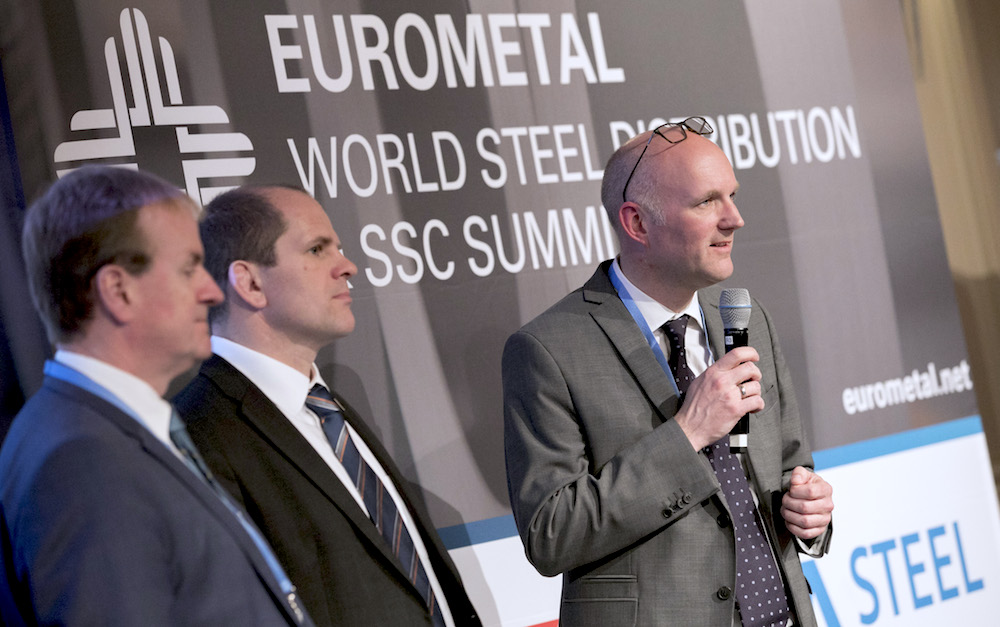
Mergers present opportunities for smaller players

Representatives of some of the smaller European mills have welcomed potential mega mergers in the continent’s steel industry, suggesting there will be benefits to the sector and opportunities for their companies.
ArcelorMittal, Marcegaglia and Arvedi are involved in the final stages of the bidding process to acquire the Ilva works in Taranto, while ThyssenKrupp and Tata Steel are discussing a potential merger in moves most see as crucial to consolidating the European industry.
Speaking at the EUROMETAL World Steel Summit conference in Dusseldorf, Sebastian Bross of Salzgitter said mills like his, with around 5% market share in the strip sector, had already received increased interest as a result of the rumors surrounding competitors. “We would like to have a less fragmented market but if there are some big players there’s always a role for some smaller ones… We recognized that as soon as these rumors began going on about a joint venture between ThyssenKrupp and Tata Steel we saw customers coming to us… It’s no threat it’s actually more a chance for us,” he said.
Henrik Adam of Tata Steel Europe agreed overcapacity and a lack of consolidation was one of the structural issues facing the sector, but declined to say how many producers there should be in the flat steel market, saying: “more than one and less than ten.”
Another source from a smaller European mill agreed with Bross noting their company would benefit from the reduced number of players in the market as competition for business would decrease, while a desire of customers to create as diverse a supply chain as possible should push demand in their direction.
Peter Brennan, S&P Global Platts

EU wants to be a poster child for the WTO: Salzgitter
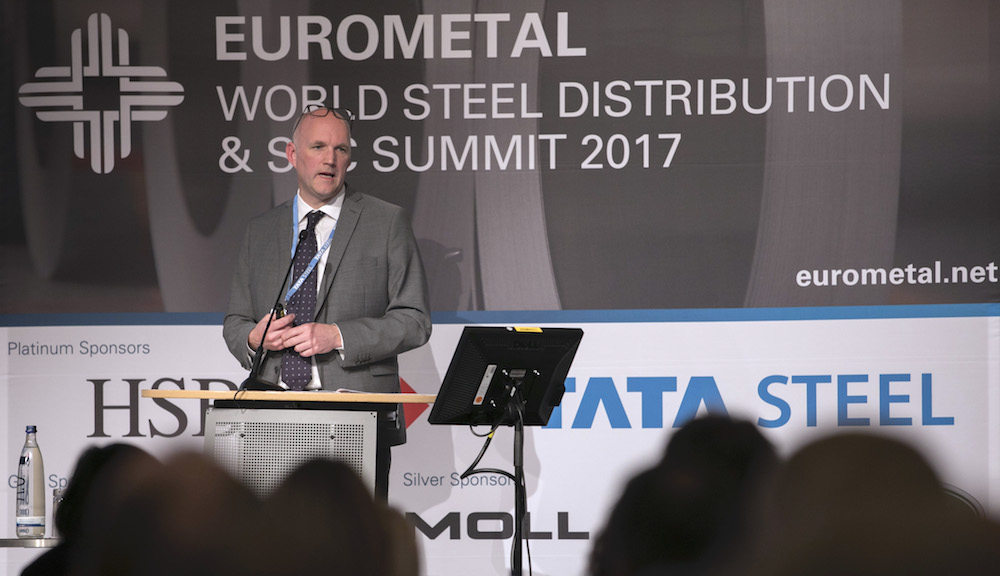
The European Union is too slow and too cautious in tackling dumping, according to Sebastian Bross of Salzgitter Flachstahl, who told the EUROMETAL World Steel Summit conference in Dusseldorf he did not understand the decision not to impose preliminary HRC duties.
Bross said the difference between the EU and the US was stark in its approach to trade barriers, pointing to the European Commission’s logic in making its conclusion to its preliminary investigation into imports of HRC from Russia, Brazil, Iran, Ukraine and Serbia.
“240 of the 250 pages showed there was dumping, but in the end there was no duty. I don’t really understand that… Compared to the US it’s slow, very limited, and from our perspective far too cautious. It feels that the EU wants to be a poster child for the WTO. We accept every rule and we’re pretty fair, but it means it takes a very long time [to impose duties] and you see how quickly this flow of material changes,” he said.
The launching of a section 232 investigation in the US has made European mills nervous as the US is a major export destination for the continent. Bross pointed out the potential distortions to global trade if the US stops importing and the implications for the European market, “Where does the material go, where does it find its new home? If you look at the slow progress in the EU you can assume it will end up here,” he said.
Salzgitter is benefiting from the good performance in the automotive sector which accounts for two thirds of its annual 3.3 million mt of strip production. But Bross said pressures remain as construction and tube demand is still weak and growth in European steel demand is benefiting importers rather than the domestic producers.
Peter Brennan, S&P Global Platts

European buyers require established imports: Macrometal
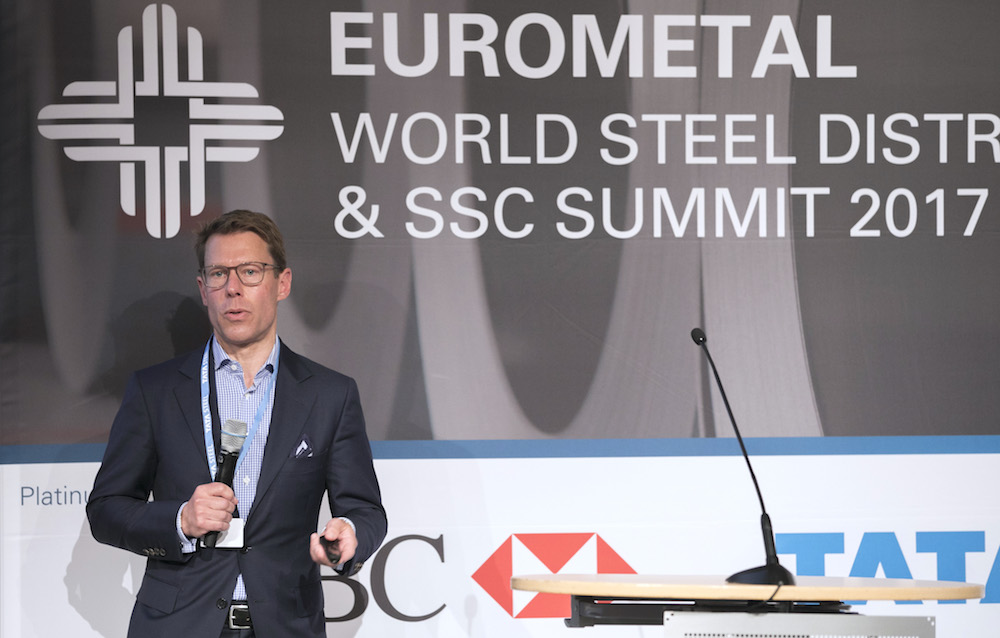
European import buyers purchased a lot of strip material from established suppliers China and Russia in the fourth quarter of 2016, despite ongoing anti-dumping duties and imposed duties, Alexander Julius, CEO of Macrometal, said at the EUROMETAL World Steel Summit conference in Dusseldorf Thursday.
“Despite accusations and ongoing accusations, imports have increased dramatically for metallic coated flats,” he said. As domestic suppliers were eyeing increases in the second half of the year, buyers turned to Russia and China to cover their requirements in the event of further increases, he said.
In fact, buyers bought more material than required, resulting in currently high stocks throughout Europe, he said.
While trade measures help create a level playing field, “excessive” action cause an uncertain environment for steel-using industries, according to Julius: in its current investigation into HRC imports from Brazil, Iran, Russia Serbia and Ukraine, the European Commission refused to impose provisional duties that would harm end-users.
“Established sources such as Russia cannot easily be substituted. They have become an integral part of EU manufacturers’ business model and competitiveness,” he said, suggesting import sources are essential as domestic mills are not prioritizing commodity grades.
“How can European manufacturers make a proper business planning with uncertain availability?” he asked, drawing up a worst case scenario in which manufacturing would have to partly move out of the EU.
Julius also questioned whether hot-dip galvanized tonnages from investigated countries could be supplied by domestic mills at competitive “transparent” price levels, pointing to the current move by mills towards effective pricing by removing extra price lists and giving a “custom-made” price. “It is very difficult for end-users to know where these effective prices are coming from,” he said.
He also alluded to defense measures elsewhere, such as the US, hurting European exporters. “We don’t only have a problem with imports, but also with exports.”
Laura Varriale, S&P Global Platts

